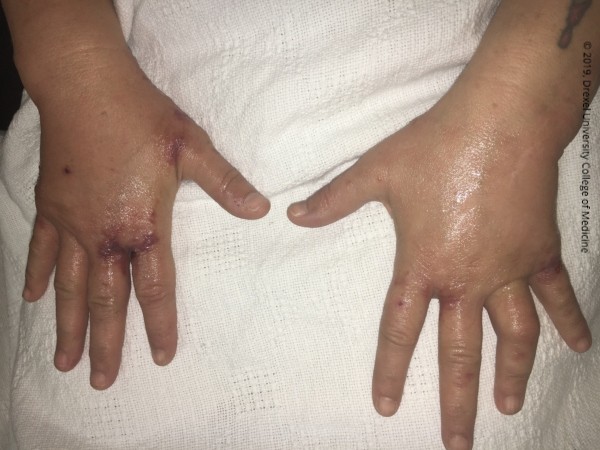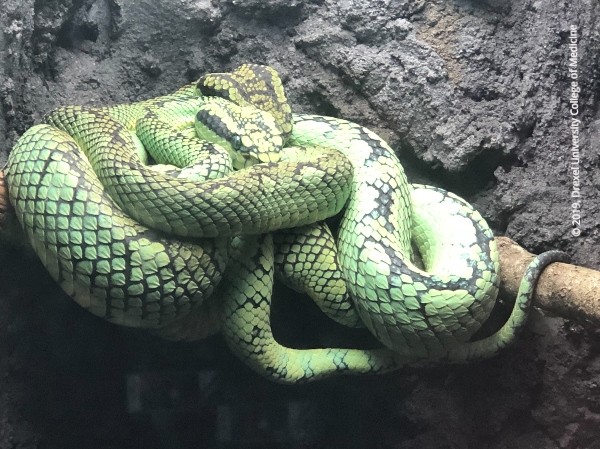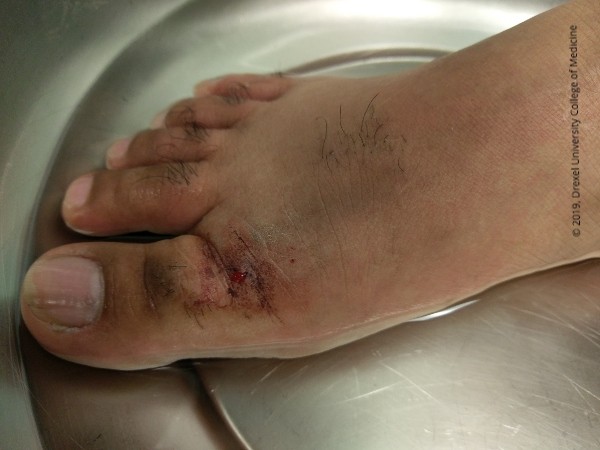S

SAIMR polyvalent snake antivenom is a preparation of refined immunoglobulins from the serum of horses that have been hyperimmunized against the venom of the following snakes: Bitis arietans (puff adder), Bitis gabonica (gaboon adder), Hemachatus haemachatus (rinkhals), Dendroaspis angusticeps (green mamba), Dendroaspis jamesoni (Jameson's mamba), Dendroaspis polylepis (black mamba), Naja nivea (Cape cobra), Naja melanoleuca (forest cobra), Naja annulifera (snouted cobra), Naja mossambica (Mozambique spitting cobra).
Back to Top

Most scorpion stings in North America result only in local pain. Arizona Bark Scorpion (Centruroides sculpturatus), found in AZ, NV, NM, TX, and CA, is the only neurotoxic species found in North America and can cause systemic toxicity. Cranial nerve and somatic motor dysfunction can develop (roving eye movements, Hypersalivation) as well as dysautonomias.
Back to Top

Seafood is a major source of organic arsenic exposure. Arsenolipids and arsenosugars can be metabolized by humans. Some organic arsenic compounds and their metabolites can produce cytotoxic effects. Image courtesy of Nimer Assi - https://www.instagram.com/nimer_photography/.
Back to Top

Sedalphorte: Pentobarbital is a short-acting barbiturate previously used as a sedative but now primarily used only as a veterinary anesthetic and for euthanasia. Barbiturates, like other sedative-hypnotics, produce CNS depression by enhancing the function of GABA-mediated chloride channels.
Back to Top

Ingestion of colloidal silver can be toxic regardless of the dose. The most common side effect is argyria which is a permanent bluish-gray change in the skin color. Colloidal silver can also affect the absorption of numerous drugs such as antibiotics. Furthermore, colloidal silver should never be ingested, as it has not had any proven health benefits.
Back to Top


Sodium hypochlorite is the active component in bleach cleaning products. Most household bleach products contain a low concentration of the alkali hypochlorite (< 5%) and the toxicity of ingestion is limited, unless intentional. Hypochlorite will produce an irritant effect on the mucous membranes and gastrointestinal tract. Higher concentrations of hypochlorite, utilized in industrial products, will produce caustic injuries including necrosis and erosion through the gastrointestinal tract.
Back to Top


The Green Pit viper (Trimeresurus trigonocephalus) is a tree-dwelling, nocturnal snake that is endemic to Sri Lankan rain forests and wet grasslands. It has a large triangular head and a striking bright green and black pattern. The most common bites are reported on estate and field workers. Bites resulting in local envenomation cause severe local pain, swelling, and tissue necrosis. Systemic manifestations include coagulopathy and lymphadenopathy. Treatment is supportive and no fatalities have been reported.
Back to Top

Found throughout the world, particularly in coastal regions. During an attack, the stinger and sheath can be embedded in the soft tissue of the victim leading to severe pain. The mechanism of the toxicity is not fully understood. Treatment generally involves submerging the affected body part in hot water, which is usually effective in relieving some of the extreme and discomfort.
Back to Top


Human made chemicals that are dried on plant material in order to resemble marijuana. Considered a “new pyschoactive substance”. Can lead to elevated mood, relaxation and symptoms of pyschosis. In particular, the psychosis is particularly alarming leading to extreme anxiety, confusion, and hallucinations. Patients have also experienced tachycardia and vomiting and rarely suicidal thoughts.
Back to Top
The information on these pages is provided for general information only and should not be used for diagnosis or treatment, or as a substitute for consultation with a physician or health care professional. If you have specific questions or concerns about your health, you should consult your health care professional.
The images being used are for illustrative purposes only; any person depicted is a model.